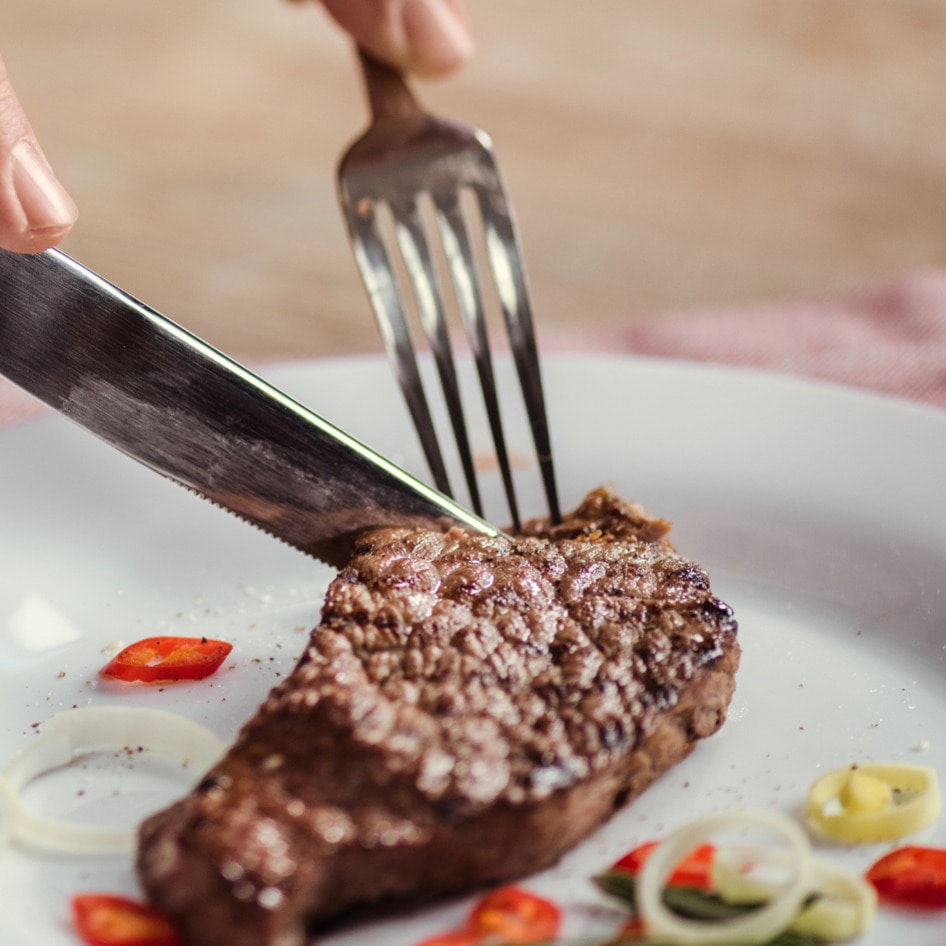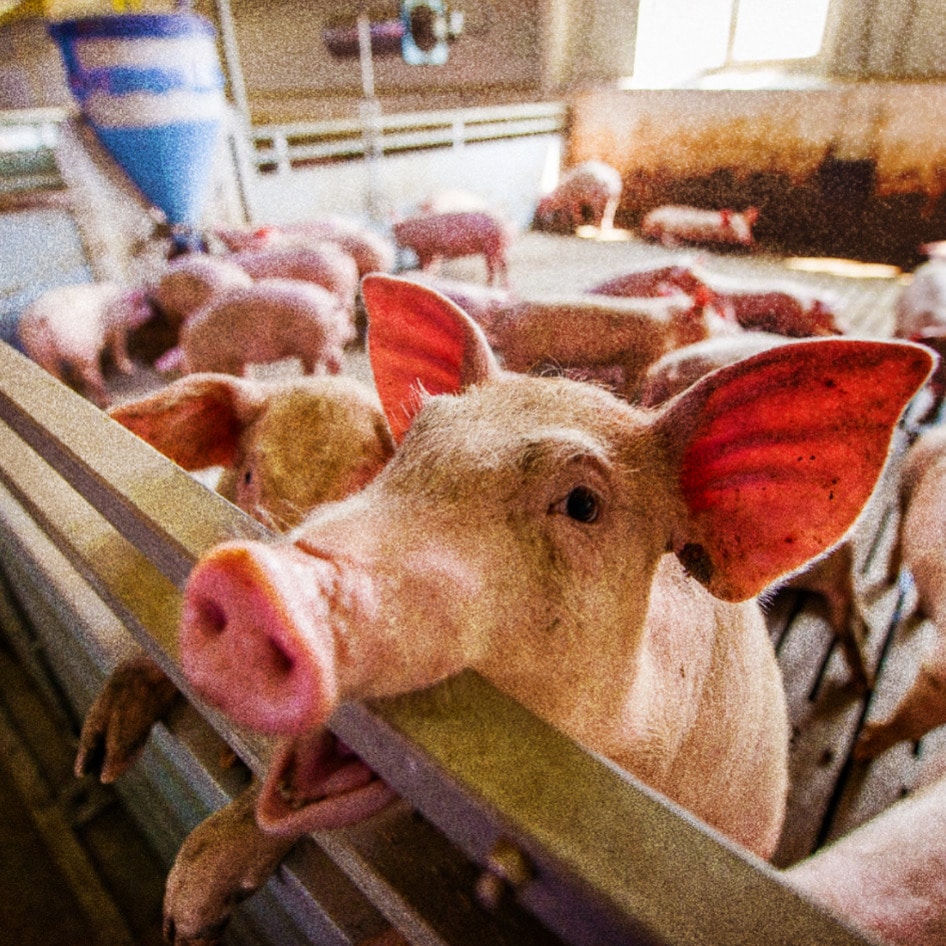Ethan Brown, the CEO and founder of growing vegan brand Beyond Meat, penned a letter to the United States Securities and Exchange Commission that accompanies the company’s updated prospectus submitted to file for an Initial Public Offering (IPO). The newest filing, submitted last week, includes the requisite financial information, valuations, and projections (and all of those metrics are outstanding), but comes with a human element imparted by Brown’s moving personal letter. His words speak to the evolution of humankind in a way that spans the 12,000 odd years of our struggles with finding food as hominids to our current battles with animal-rights abuses, environmental degradation, and broad-reaching health epidemics. Brown is not merely selling Beyond Meat to close the IPO deal; he is offering a poignant analysis of humankind from the lens of a changemaker. Since our words cannot do Brown’s own justice, below is his letter in full—a piece of insight from a company that aims to be one of the most disruptive of our lifetime.
LETTER FROM ETHAN BROWN, BEYOND MEAT FOUNDER AND CHIEF EXECUTIVE OFFICER
Beyond Meat’s story begins on farmland. Through my father’s love of farming and the natural world, my urban childhood was interwoven with time spent on our family’s farm in Western Maryland where we were partners in a Holstein dairy operation. As a child, I was fascinated by the animals surrounding us: the companions at our sides, the livestock in the barns and fields, and the wildlife in the woods, streams, and ponds. As a young adult, I enjoyed a career in clean energy but continued to wrestle with a question born of these early days: do we need animals to produce meat? Over the years, the question knocked more loudly and I set out to understand meat.
I learned that we are deeply indebted to the carnivorous tendencies of our ancestor, the Great Southern Ape of Africa. The so-called Australopithecus Africanus increasingly integrated meat into a steady diet of vegetation, the nutrient density of which reduced the size and energy requirement of our stomachs, freeing up energy for our brains which more than doubled in volume. With this outsized brain came increased capabilities, and increasingly sophisticated hominids shifted from scavengers to hunters.
It was not until some 12,000 years ago that agriculture appeared as we shifted from hunters of game to harvesters of crops and livestock. Farming enabled population growth, which demanded more from agriculture. We responded with a full display of human ingenuity and creativity. Across different geographies, soil types and climates, we grew and harvested crops and raised and slaughtered livestock. The model worked for the five million people alive in agriculture’s early days and for 250 million humans in early A.D. and provided the caloric fuel to grow the world’s population to today’s 7.6 billion.
As [the] population increased over the last century, we used science and technology to get more output per acre of land and more meat per species of livestock. For example, in the United States between the 1930s and 2016, the yield per acre of corn has grown nearly 600 percent and soybeans 400 percent, and from 1925 to 2017, broiler chickens have increased in weight by 250 percent. The result: ubiquitous availability of low-cost meat.
But progress came with cost in four key areas: human health, climate change, natural resources, and animal welfare. Correlations between animal protein consumption and disease spawned a cottage industry of studies and documentaries on the relationship between certain meats and epidemics of cancer, heart disease, and diabetes. Livestock emerged as a major contributor of greenhouse gas emissions, with related burdens on land, energy, and water.
We do not, however, face a binary decision to eat or abandon meat. There is a path forward that I believe will unlock a new era of productivity for farmers, one capable of exceeding the gains made in the 20th century. It requires a change in perception, coupled with the use of science and technology.
If we insist meat be defined by origin—namely poultry, pigs and cows—we face limited choices. But if we define meat by composition and structure—amino acids, lipids, trace minerals, vitamins, and water woven together in the familiar assembly of muscle, or meat—we can innovate toward a solution.
Here’s how. None of these core elements of meat is exclusive to the animal. They are abundant in the plant kingdom. The animal serves as a bioreactor, consuming vegetation and water and using their digestive and muscular system to organize these inputs into what has traditionally been called meat. At Beyond Meat, we take these constituent parts directly from plants, and together with water, organize them following the basic architecture of animal-based meat. We bypass the animal, agriculture’s greatest bottleneck.
For the consumer, this means that we can provide great tasting meat from plants -meat that delivers health benefits and environmental upside (90 percent fewer greenhouse gas emissions, 99 percent less water, 93 percent less land, and 46 percent less energy) and the animal welfare issue. This is not a call to consume less meat. My own children enjoy more, rather than less, of their favorite meat occasions (sausage breakfasts, burger dinners) as I am comfortably aware that Beyond Meat products are free of cholesterol and other aspects of animal protein that preoccupy public health debate. As we rush to keep up with consumer demand for our products, my guess is that many families are having the same experience.
All of this takes us back to the farm. I am, like many, troubled by the fraying fabric of our rural heritage, one increasingly torn by vanquished towns, marginalized populations ensnared in an opioid crisis, and hidden factory farms. In too many ways, rural communities stood as [a] spectator in the digital revolution that has reshaped our economy. Not in the Beyond Meat story. Instead of growing low-value commodity feed for animals, I see a future of farmers growing higher value protein crops for more direct human consumption via plant-based meat. As attendant efficiency gains (which are worth repeating-93 percent less land, 99 percent less water, and 46 percent less energy per pound of consumable meat) are realized, we open vast resources for further wealth creation by the farmer, carbon sequestration (pending rational carbon policies that reward the farmer as land steward), and, of course, conservation. I believe there is a new dawn for American agriculture and this conversion is our awakening hour.
At Beyond Meat, we can do our part by relentlessly pursuing that perfect build of meat from plants. At our innovation center, the Manhattan Beach Project, scientists, and engineers are rapidly closing in on the differences between our plant-based meats and their animal protein equivalents. Certainly, gaps do and will remain for some time. However, having looked under the hood and through the microscope, we can say with confidence that we see no material obstacles to a perfect build of meat from plants. With each advance, I believe the market for our products will increase, and our sales will grow.
Lastly, as we embark on this next leg of our journey, I’d like to thank our partners-the consumer-for being with us each step of the way. From the first days in 2009 of sampling our products to shoppers throughout the Mid-Atlantic, Ohio, and Kentucky, we’ve always felt an important message: consumers want this to work. Through successes and struggles, the consumer has been there for us, offering feedback, love, and inspiration. Today, together we are breaking new ground. This summer, for twelve consecutive weeks, The Beyond Burger outsold (by unit) all packaged beef patties in the meat case across the Southern California division of Ralph’s, a subsidiary of Kroger, one of the nation’s largest conventional grocers. This outcome surprised us—our aspiration as the only plant-based entrant in the meat case was to simply hold our own. As a new and plant-based entrant in the meat case, we did not contemplate this #1 position. And we learned that from January through June last year, nationwide across Kroger, 93 percent of consumers who bought The Beyond Burger also put animal meat in their shopping cart—an important indication of mainstream appeal. Lastly, as we launched The Beyond Burger in the second largest quick-serve restaurant in Canada, A&W, consumer demand drove up store traffic across the chain, strongly outstripped forecasts, and led to much-publicized outages.
In closing, it is with gratitude that we now offer the consumer the opportunity to become an owner in the company they helped build, bite by bite. We hope investors join us as we seek to become the first generation of humans to separate meat from animals, unlocking the next era in the American story of innovation, disruption, and growth.
Sincerely,
Ethan Brown
JUMP TO ... Latest News | Recipes | Guides | Health | Subscribe







